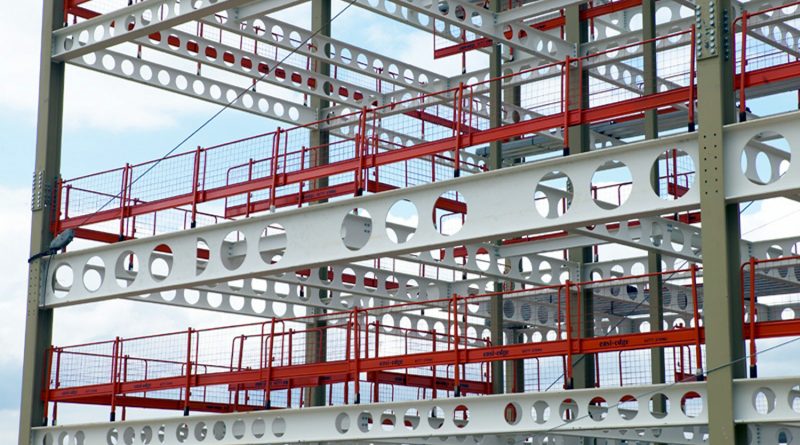ASFP releases new advisory notes on the Fire Protection of Structural Steel
ASFP releases new advisory notes on the Fire Protection of Structural Steel
The Association for Specialist Fire Protection (ASFP) has released a suite of new Advisory Notes which offer guidance on the fire protection of structural steel. The four new Advisory notes address specific concerns identified by industry.
ASFP Advisory Note 18: ASFP Position on Installing Partitioning to the Underside of Structural Steel Sections Coated with a Reactive Fire Protection System highlights concerns related to fixing partitioning directly to columns or beams treated with intumescent paint. It notes that fixing anything directly to either the column/beam will impede the intumescent paint from expanding and may allow heat to transfer to the steel, resulting in localised loss of strength and potential failure in the event of a fire.
Since partitioning is often installed along the line of a structural steel frame, the ASFP has joined with the FIS (Finishes and Interior Sector – the dry lining industry trade association), to recommend that, regardless of the existing sound or acoustic protection, the beam or column should be boxed out with an independently tested framed or an unframed system that will provide the required level of fire protection to the beam/ column.
Advisory Note 19: ASFP Position on the Use of Critical Steel Temperatures above 650°C recommends that if a limiting temperature of above 650°C is specified, then a second opinion should be sought from an appropriately trained structural engineer. This reinforces the best practice guidance contained within Advisory Note 12: Best Practice Guide for Specifying Reactive Coatings for Structural Steel Fire Protection, published jointly by the ASFP and the British Coatings Federation.
ASFP Advisory Note 20: ASFP Position on Portal Frame Buildings provides advice on providing fire protection to portal frame rafters, and should be used in conjunction with the SCI document P313: Single Storey Steel Framed Buildings in Fire Boundary Conditions.
It recommends that where fire protection is required to portal frame rafters, certified 4-sided beam thicknesses should be applied to all 4 sides of the rafter, using the appropriate critical temperature. In cases where a portal frame rafter cannot be coated on the top flange if the roofing materials are in place, a structural engineer and/or fire engineer should be consulted, as further action may be required. Care should also be taken to use the appropriate 4-sided section factor in all cases.
ASFP Advisory Note 21: ASFP Position on Coatback with Respect to Unprotected Secondary Beams Fixed to Protected Primary Beams advises against the omission of coatback to protect secondary beams when the primary beam is fire protected. It describes references to such omissions contained within Steel construction – Fire Protection, published by the British Constructional Steelwork Association in 2013, as unconservative. The recommendations in the advisory note has more detail than that contained within ASFP Yellow Book (5th edition) and ASFP TGD 8: Code of practice for junctions between different fire protection systems which will be amended accordingly.
The Yellow Book will state: ‘If there is no evidence to support the omission of coatback then a figure of 500mm as stated in ASFP TGD 8 Code of practice for junctions between different fire protection systems when applied to load bearing structural steel elements should be assumed as a conservative solution.’
The guidance highlights that the primary beam must be a solid web beam and that omitting coatback does not apply when the protected beams are cell beams. While noting that individual manufacturers have undertaken tests to show that reduced coatback may be sufficient, the guidance states that, the specific end use situation and the proprietary evidence must be considered and that coatback should only be omitted in situations where a detailed engineering study has been completed.
All ASFP guidance documents are available for free download from the Publications area of the ASFP website: www.asfp.org.uk.

